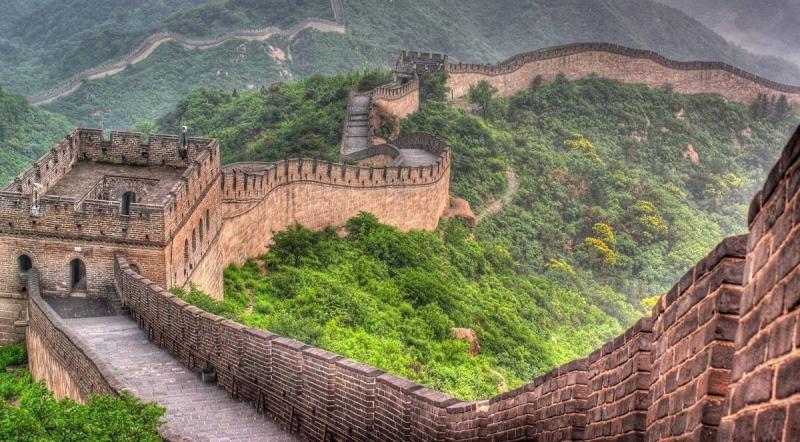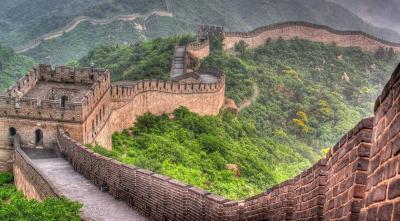The Great Wall of China is an ancient architectural wonder that has withstood the test of time for thousands of years, stretching through the mountains from the Jiayu Pass in northwest China to the Shanhaiguan Pass in the northeast. But how has the wall endured all these years despite some parts collapsing and others turning to ruins due to weather factors and the passage of time?
A new study has answered these questions, highlighting that the earthen sections of the wall have developed a natural defensive line against deterioration, according to a report from CNN. The soil surfaces of the Great Wall are covered with small plants and rootless microorganisms known as biological crusts, which are considered a key factor for its longevity, as stated by soil ecologist Matthew Boker, one of the study's authors published in December in the journal "Science Advances."
Boker, an associate professor at Northern Arizona University, noted that biological crusts are common worldwide in the soils of arid regions, emphasizing that scientists typically do not look for them in human-made structures. He further explained that the effects of biological crusts and communities of cyanobacteria and algae enhance the stability of the Great Wall and improve its resistance to erosion, according to the new research paper.
By examining samples taken from over 483 kilometers across eight sections of compacted earth built during the Ming Dynasty between 1368 and 1644, the authors found that more than two-thirds of the area is covered by biological crusts. When the researchers compared the stability and strength of bio-crust samples with those devoid of plant layers, they discovered that samples containing bio-crusts were three times stronger than those without.
Biological crusts consist of components such as cyanobacteria, algae, and fungi, which live in the surface soils of dry lands. These communities of small plants and microorganisms, which cover an estimated 12% of the Earth's surface, can take decades or more to develop. By forming miniature ecosystems, biological crusts help stabilize the soil, increase water retention, and regulate nitrogen and carbon fixation.
### An Ancient History
The Great Wall spans a vast area north of China, from the Manchurian region to the Gobi Desert and the Yellow Sea. It has a rich history, having been constructed over two thousand years, from the 3rd century BC to the 17th century AD, during the reign of 16 ruling dynasties. The Ming Dynasty built the longest and most famous section of the wall, including the Jiankou part, from 1368 to 1644.
### A Vanishing Legacy
A survey conducted by the National Cultural Heritage Administration of China revealed that the Ming Wall extends for 8,851 kilometers, including trenches for 359 kilometers and 25,000 watchtowers. Today, one-third of the original fortresses built during the Ming period have disappeared, with only eight percent remaining in good condition. The wall faces many threats, from natural erosion factors such as wind and rain to human activities, including construction and the theft of bricks from the wall for resale, not to mention the damage caused by the large numbers of visitors walking back and forth along it.




